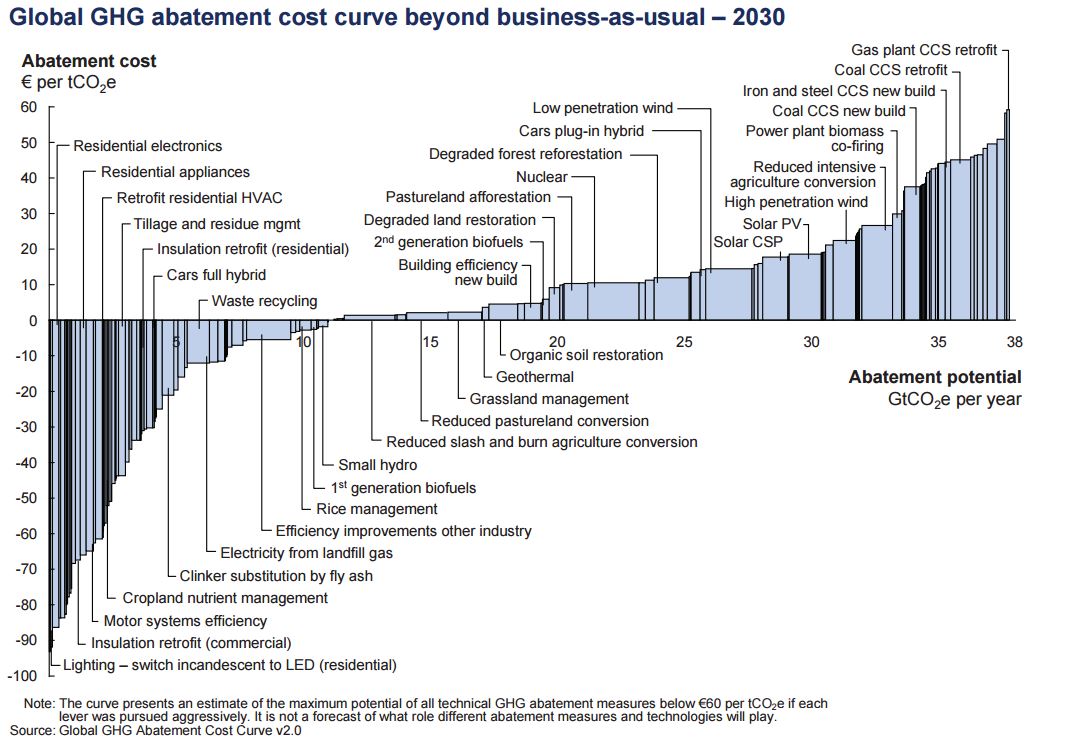|
At Our World In Data, Hannah Ritchie writes:
"An abatement cost curve measures two key variables, as shown on McKinsey’s chart below: abatement potential and the cost of abatement. ‘Abatement potential’ is the term we use to describe the magnitude of potential GHG reductions which could be technologically and economically feasible to achieve. We measure this in tonnes (or thousand/million/billion tonnes) of greenhouse gases (which is abbreviated as carbon dioxide equivalents, or CO2e). Note that our measure of CO2e includes all greenhouse gases, not just CO2. So, on the x-axis we have the abatement potential of our range of options for reducing our GHG emissions; here, each bar represents a specific technology or practice. The thicker the bar, the greater its potential for reducing emissions. "On the y-axis we have the abatement cost. This measures the cost of reducing our GHG emissions by one tonne by the year 2030, and in this case is given in € (i.e. € per tonne of CO2e saved). But it’s important to clarify here what we mean by the term ‘cost’. ‘Cost’ refers to the economic impact (which can be a loss or gain) of investing in a new technology rather than continuing with ‘business-as-usual’ technologies or policies. To do this, we first have to assume a ‘baseline’ of what we expect ‘business-as-usual’ policies and investments would be. This is done—for both costs and abatement potential—based on a combination of empirical evidence, energy models, and expert opinion. This can, of course, be challenging to do; the need to make long-term predictions/projections in this case is an important disadvantage to cost-abatement curves. … "if we look at the lowest end of the scale we see that installing energy efficient lighting is the cheapest option (providing a high economic return through efficiency savings). However, its total abatement potential is very limited. If we were looking for an investment which could save a large quantity of GHGs, we might have to select an option which is more expensive, but has a greater abatement potential. The trade-off between cost and potential is an important one."
0 Comments
Your comment will be posted after it is approved.
Leave a Reply. |
AboutThis is my notepad. Archives
January 2018
|

 RSS Feed
RSS Feed
